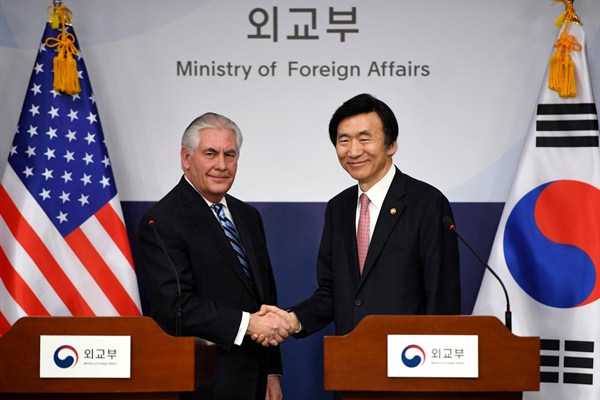The threat from North Korea to the United States, the Asia-Pacific region, and the global economy is growing rapidly. For decades the dynasty of Kim family dictators has used military provocation to fend off external pressure. Over the past decade, this took a particularly ominous turn as Pyongyang added a nuclear capability to its massive conventional military force. Today the erratic aggression of Kim Jong Un, North Korea’s current dictator, is pushing the danger to ever greater heights, backed by a growing nuclear arsenal and ballistic missile capability.
When North Korea first tested an atomic device in 2006, the United States was not terribly concerned. The George W. Bush administration saw this as a cry for attention from a regime that at the time had no nuclear warheads or reliable systems to deliver them. Much has changed since then. Pyongyang may have as many as 20 nuclear warheads and the capability to make more. Its delivery systems are improving. Last year, North Korea tested its first two-stage, solid-fuel ballistic missile. And it seems determined to build intercontinental ballistic missiles that can strike the United States.
So far U.S. policy has been to use sanctions, political pressure and, according to media reports, cyber and electronic sabotage to discourage North Korea from further expanding its nuclear arsenal and missile capability. This may have hindered Pyongyang’s efforts, but it has not stopped them. Nor is it likely to do so in the future.

